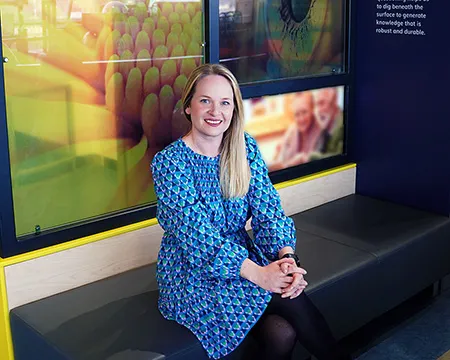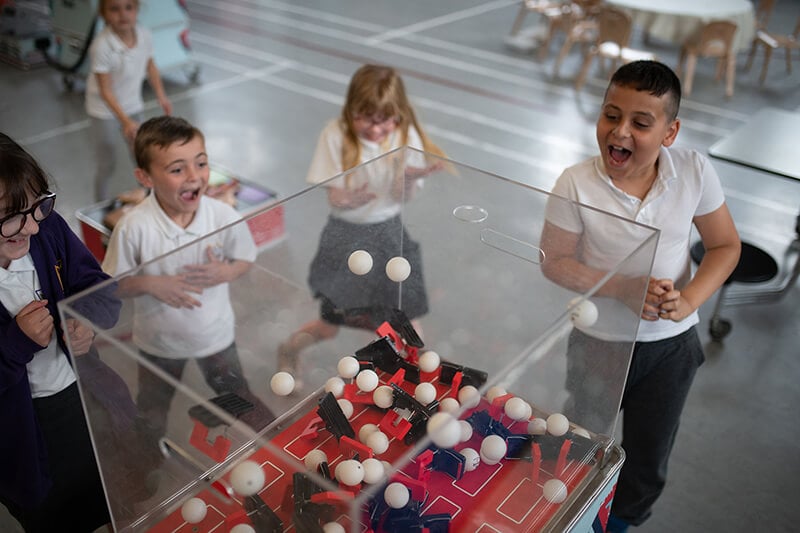Beautiful Bubbles
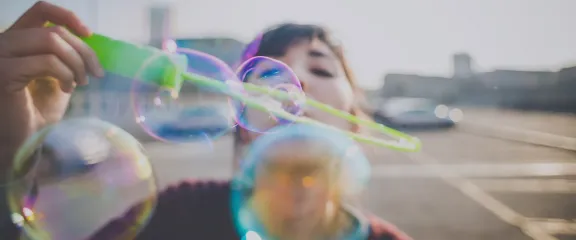
Come and explore some of the science of beautiful bubbles with Nicole Alexander.
Bubbles, everybody loves them. From children watching the colourful spheres in awe to adults enjoying a cheeky glass of ‘bubbly’, it’s fair to say bubbles are very POP-ular! But what exactly is a bubble?
What is a bubble?
Put simply, a bubble is a very thin sphere of liquid, such as water, enclosing gas or air. Everybody’s favourite, the soap bubble, is an iridescent film of soapy water around a sphere of air. Bubbles take on their familiar spherical or ball shape because of the surface tension. Water has a very high surface tension because its molecules are highly attracted to each other and stick close together. Soap decreases this surface tension slightly enabling bubbles to form. A sphere is the most efficient shape to hold the air within the least possible surface area. This means that a bubble will always be spherical when it’s free floating, no matter the funky shape of bubble wand you use.
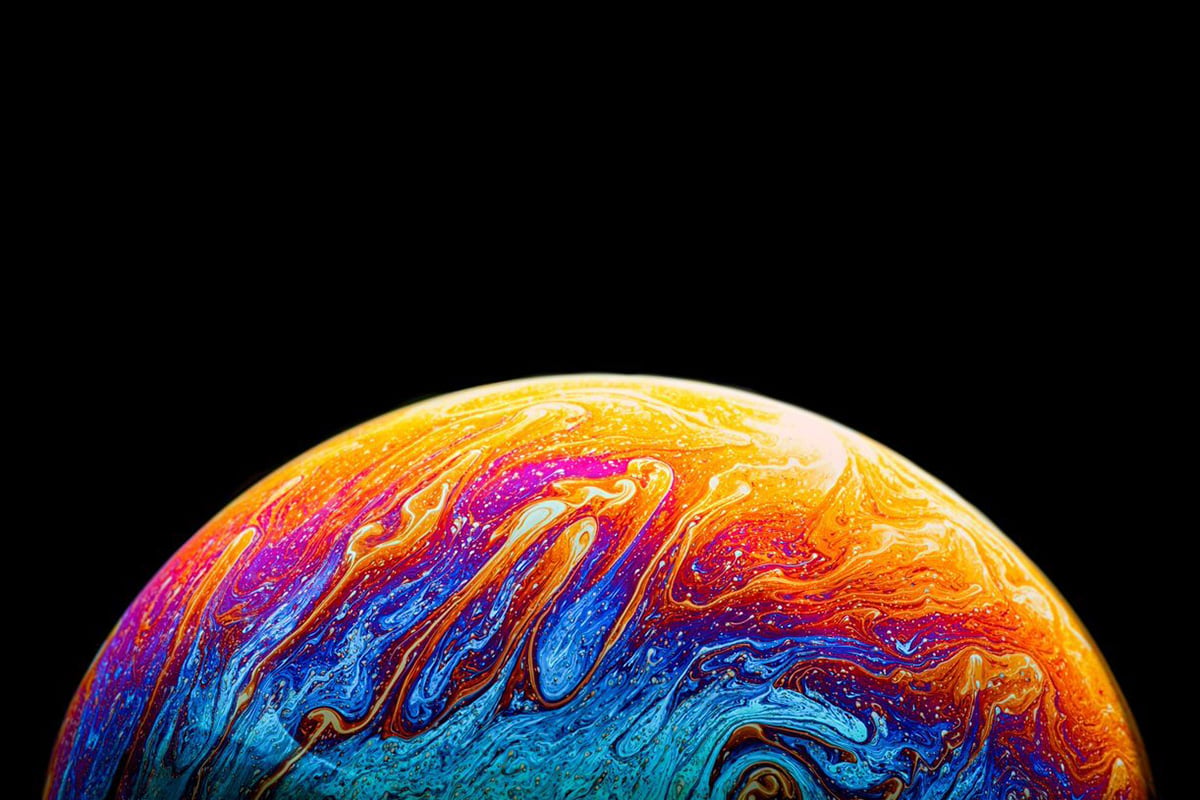
Beautiful Colours
One reason everybody loves soap bubbles is their beautiful colours. Much like a rainbow, bubbles display the spectrum of colours that can be seen by the human eye. A rainbow appears when water droplets in the sky reflect and refract, or bend, sunlight. White light from the sun is a mixture of the different colours that we can see with our eyes. The same thing happens when light is reflected from the surface of a bubble, producing its eye-catching colours.
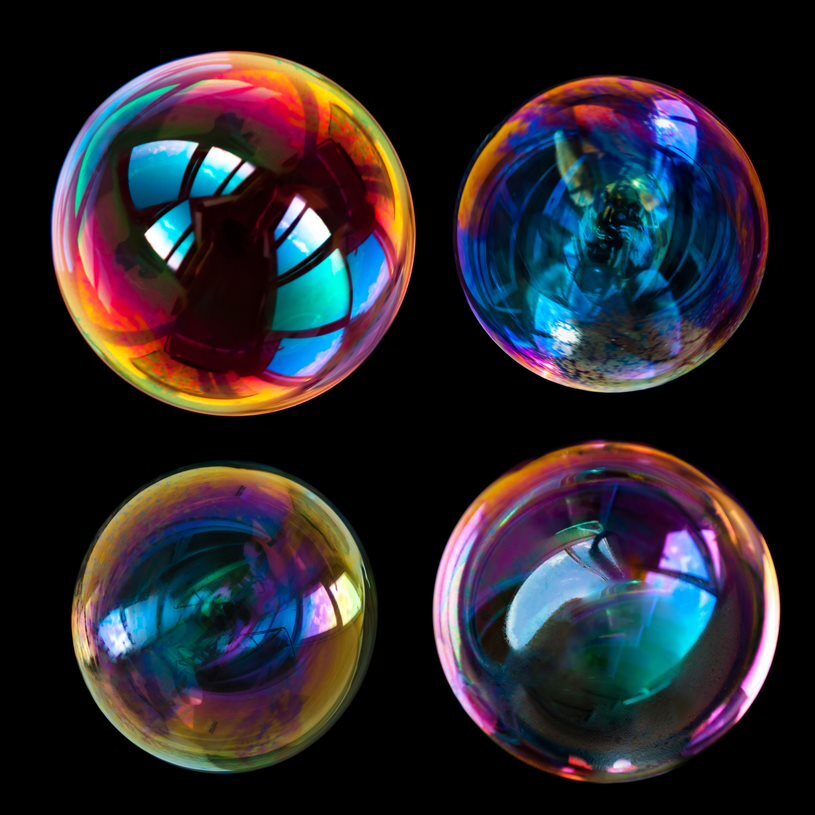
But what do the colours mean? The bubble skin is extremely thin, one hundredth thinner than the diameter of a human hair. The light hits both the inner and outer layers of the bubble making them shine with colour. Some bubbles can be surprisingly sturdy and last a long time while others burst right away. The most prominent colour in the bubble tells us how strong the bubble’s layers are. If you can mainly see blue and green swirling within the bubble, it suggests the walls of the bubble are thick and strong - a bubble that will not burst right away. However, if you see mainly yellow and orange, the walls of the bubble are likely to be thin and may pop soon.
Why do bubbles pop?
We all know that bubbles pop, but not for the reasons you might think! Bubbles pop when they dry out. In warm, bright sunlight the water inside the bubble evaporates causing it to pop. If a curious child prods a bubble with their finger it will burst, but not because their fingers are especially sharp. It is because fingers are, usually, dry. Try it yourself and amaze your kids by first wetting your hand and holding a magical ‘orb’ in your palm. Or amuse yourself in the bath by wearing a ‘bubble beard’.
Bubbles absorb sound and spread it. Whales and dolphins create bubbles to help them hunt, using bubble-nets to trap their prey. They are not the only animals who take advantage of underwater bubbles. The presence of bubbles reduces the density of the water making it easier to travel through. Both penguins and human divers utilise this to make diving into and out of water easier.
How bubbles could improve our technology
Scientists are exploiting bubbles’ characteristics to improve our technology. Bubbles have been shown to improve the quality of ultrasound scans by their ability to scatter sound. Introducing tiny bubbles into the bloodstream means doctors can see better where the blood is flowing. Doctors having a much clearer picture of the human body means they can identify problems, such as tumours, a lot easier and quicker. Researchers at Southampton University have developed the world’s only sonar capable of detecting mines in bubbly seawater. It is able to distinguish true ‘targets’, such as certain types of electronic circuits used in explosive or espionage devices, from ‘clutter’, metallic items like pipes, cans or nails that may be mistaken for genuine targets by traditional radar and metal detectors. This technology is also being used to monitor leaks from underwater oil and gas lines. The scientists got the idea for the use of bubbles from observing dolphins creating bubble nets to hunt fish. They knew the dolphin must be doing something special because even the best manmade sonar couldn’t distinguish between a bubble and a fish.
Next time you observe the humble bubble, consider how it is helping change the world for the better.
Find out more about bubbles with our exhibits on Floor 1 at Glasgow Science Centre!
Further Information
This blog post, written by Nicole Alexander from Glasgow Science Centre, is adapted from an article that first appeared in Glasgow Times in October 2022.




